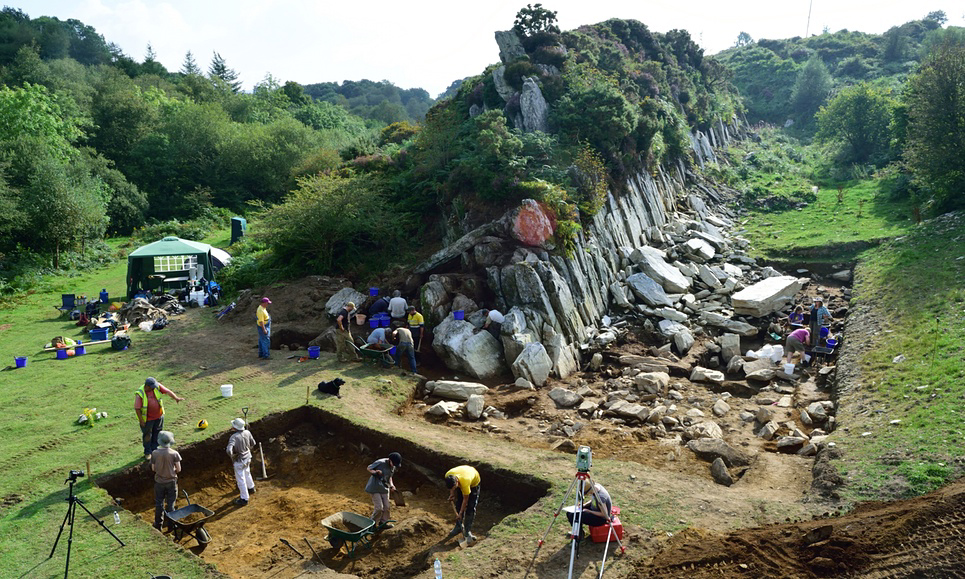


Stonehenge Prototype in Wales
|
An online article by Dalya Alberge on the Guardian - Stonehenge may have been first erected in Wales, evidence suggests - reports that the bluestones were quarried in Wales 500 years before they were put up in Wiltshire.

Image: UCL
Evidence of quarrying for Stonehenge's bluestones is leading archaeologists to theorise that England's greatest prehistoric monument may have first been erected in Wales. It has long been known that the bluestones that form Stonehenge's inner 'horseshoe' came from the Preseli hills in Pembrokeshire, around 140 miles from Salisbury Plain.
Now archaeologists, led by Prof Mike Parker Pearson of University College London, have discovered a series of recesses in the rocky outcrops of Carn Goedog and Craig Rhos-y-felin, to the north of those hills, that match Stonehenge's bluestones in size and shape. They have also found similar stones that the prehistoric builders extracted but left behind.
Carbonised hazelnut shells and charcoal from the quarry workers' campfires have been radiocarbon-dated to reveal when the stones would have been extracted.
Parker Pearson states that "We have dates of around 3400 BC for Craig Rhos-y-felin and 3200 BC for Carn Goedog, which is intriguing because the bluestones didn't get put up at Stonehenge until around 2900 BC. It could have taken those Neolithic stone-draggers nearly 500 years to get them to Stonehenge, but that's pretty improbable in my view. It's more likely that the stones were first used in a local monument, somewhere near the quarries, that was then dismantled and dragged off to Wiltshire."
He believes that they were building their own monument in Wales, and that somewhere near the quarries is the first Stonehenge and that what we're seeing at Stonehenge is a second-hand monument. He recalled the moment he looked up the near-vertical rock-face and realised that this was one of the quarries. "Three metres above us were the bases of these monoliths that were actually sitting there ready simply to be lowered out of their recesses. It's the Ikea of Neolithic monument building. The nice thing about these particular outcrops is that the rock has formed 480m years ago as pillars. So prehistoric people don't have to go in there and bash away. All they have to do is get wedges into the cracks. You wet the wedge, it swells and the stone pops off the rock."
Parker Pearson's project is being published in the journal Antiquity alongside a new book by the Council for British Archaeology titled 'Stonehenge: Making Sense of a Prehistoric Mystery'.
The ruins of a dismantled monument were likely to lie between the two megalith quarries, and the team has been conducting geophysical surveys, trial excavations and aerial photographic analysis throughout the area.
The long-distance transport of the bluestones from Wales to Stonehenge is one of the most remarkable achievements of Neolithic societies. The archaeologists estimate that each of the 80 monoliths weighed less than two tons and that people or oxen could have dragged them on wooden sledges sliding on rail-like timbers.
Visit the British Isles Prehistory Archive:
http://www.bradshawfoundation.com/british_isles_prehistory_archive/index.php
COMMENTS |
|











